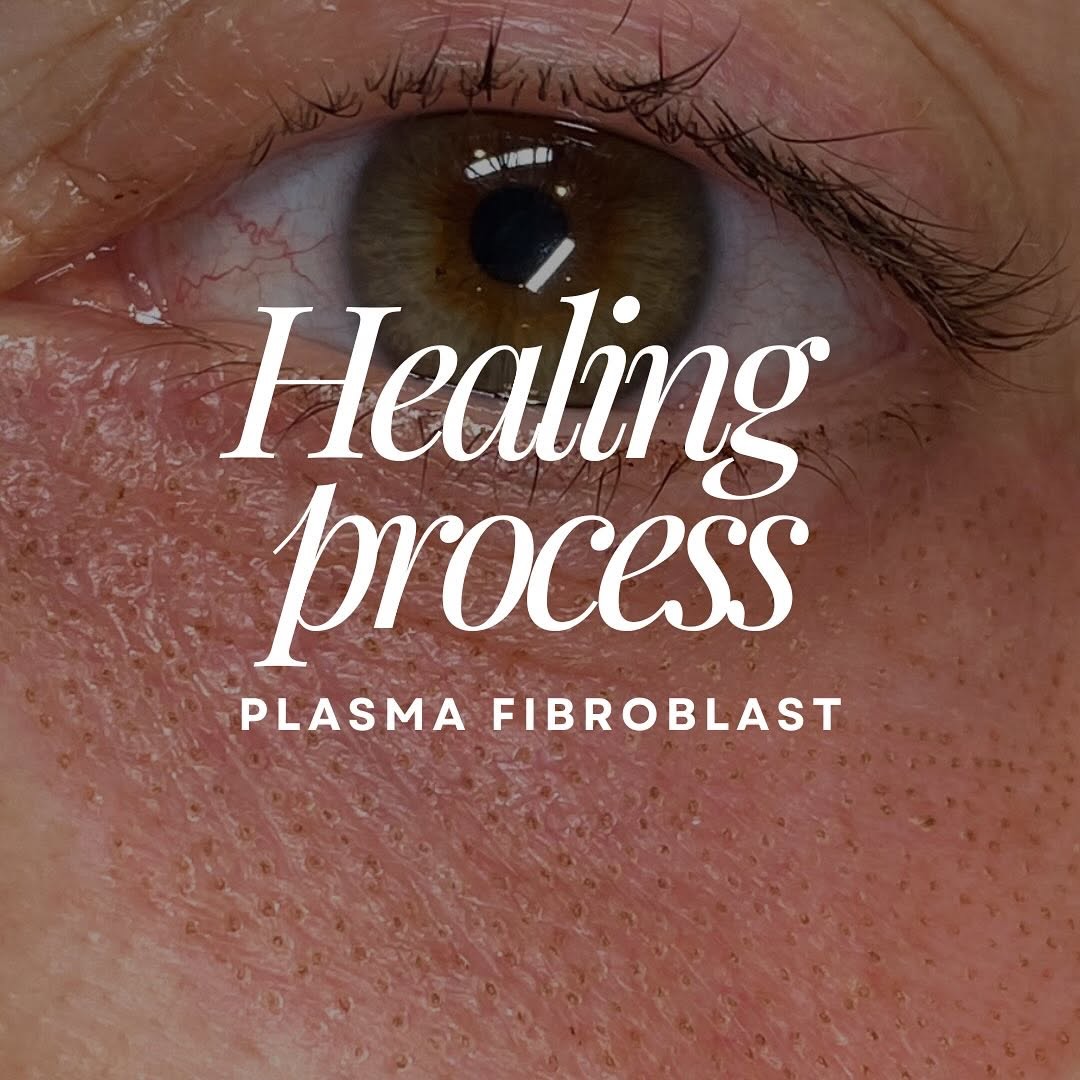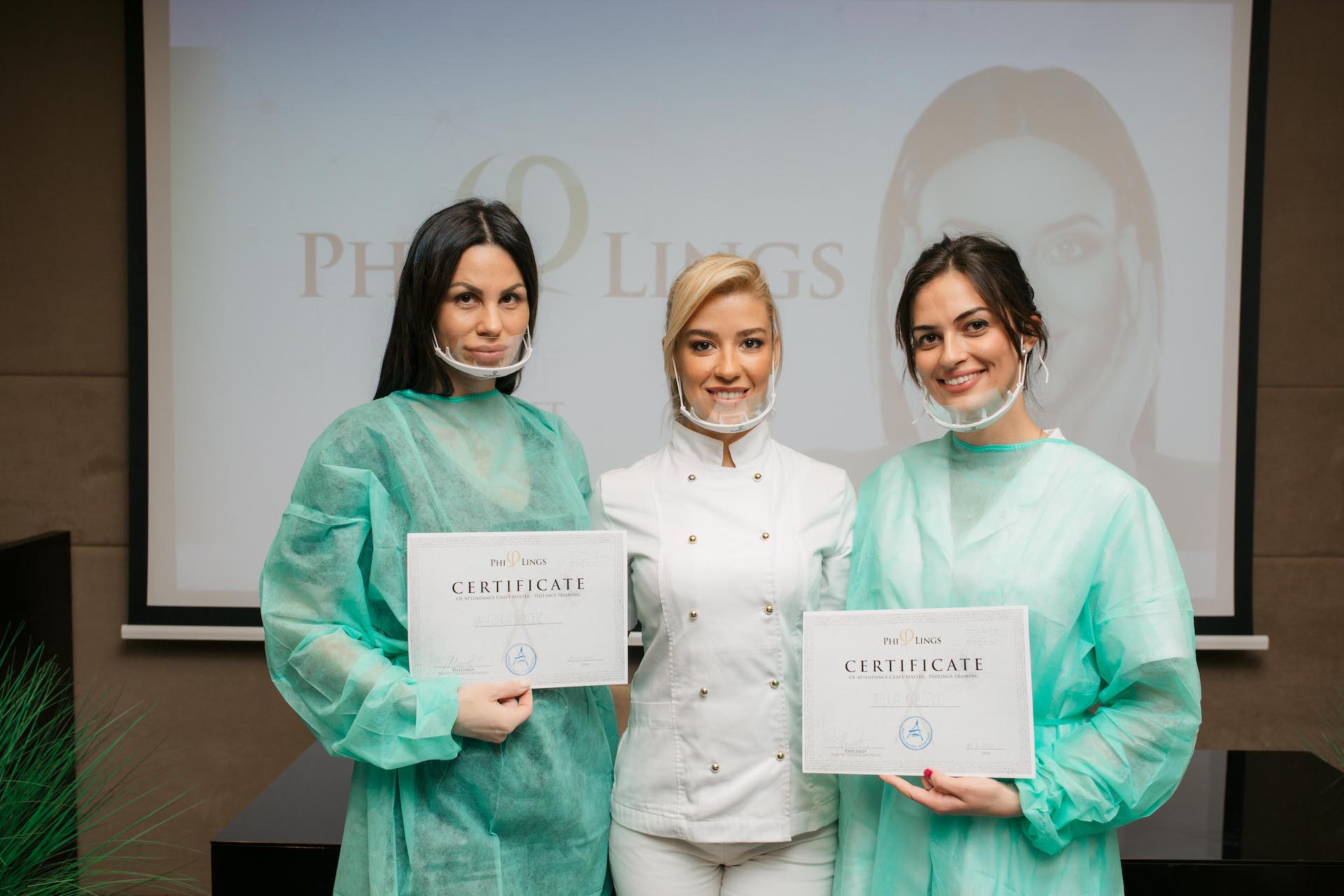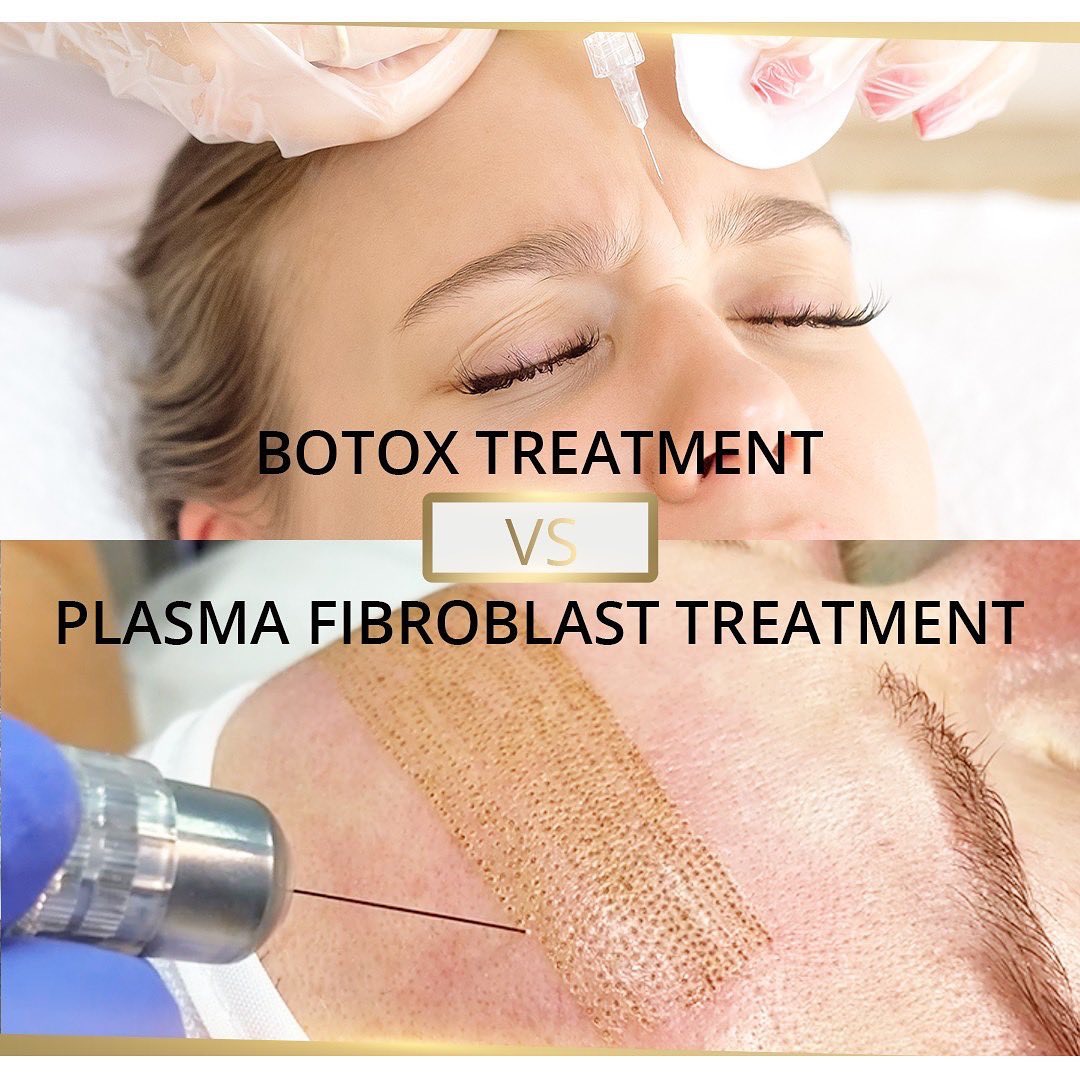Plasma Fibroblast Healing Process: From Day 1 to Final Results (6–12 Weeks)
A comprehensive clinical guide for aesthetic professionals
Plasma Fibroblast is a controlled sublimation technique that induces a predictable cascade of skin regeneration.
Understanding the entire healing timeline—from the first day through full collagen maturation—is essential for safe practice, correct client guidance, and achieving optimal clinical outcomes.
Below is a medically structured overview of each phase.

Day 1 — Immediate Post-Treatment Response
Right after the procedure, the skin enters the acute inflammatory phase, presenting with:
- erythema (redness)
- mild to moderate edema
- carbon crust formation
- warmth or tightness in the treated area
This response is expected and is a direct result of epidermal coagulation and dermal stimulation.
Biological processes activated on Day 1 include:
- keratinocyte migration and early proliferation
- fibroblast activation in the papillary dermis
- release of inflammatory mediators (IL-1, IL-6, TNF-α)
Days 2–3 — Peak Inflammation and Swelling
This is the most intense phase of the healing process, where clients typically experience:
- maximal swelling (especially on upper and lower eyelids)
- persistent redness
- firm, dry carbon crusts
What happens beneath the surface:
- vasodilation and increased blood flow
- heightened fibroblast activity
- early extracellular matrix production
- formation of the initial protective epidermal barrier
This stage is temporary and completely physiological.
Days 4–5 — Crust Maturation and Re-epithelialization
Crusts darken and stabilize as they dry. They must never be removed manually.
During this phase:
- keratinocytes continue rapid regeneration
- a new, fragile epidermal layer forms underneath
- inflammation decreases
- melanocytes reactivate, increasing the importance of sun protection
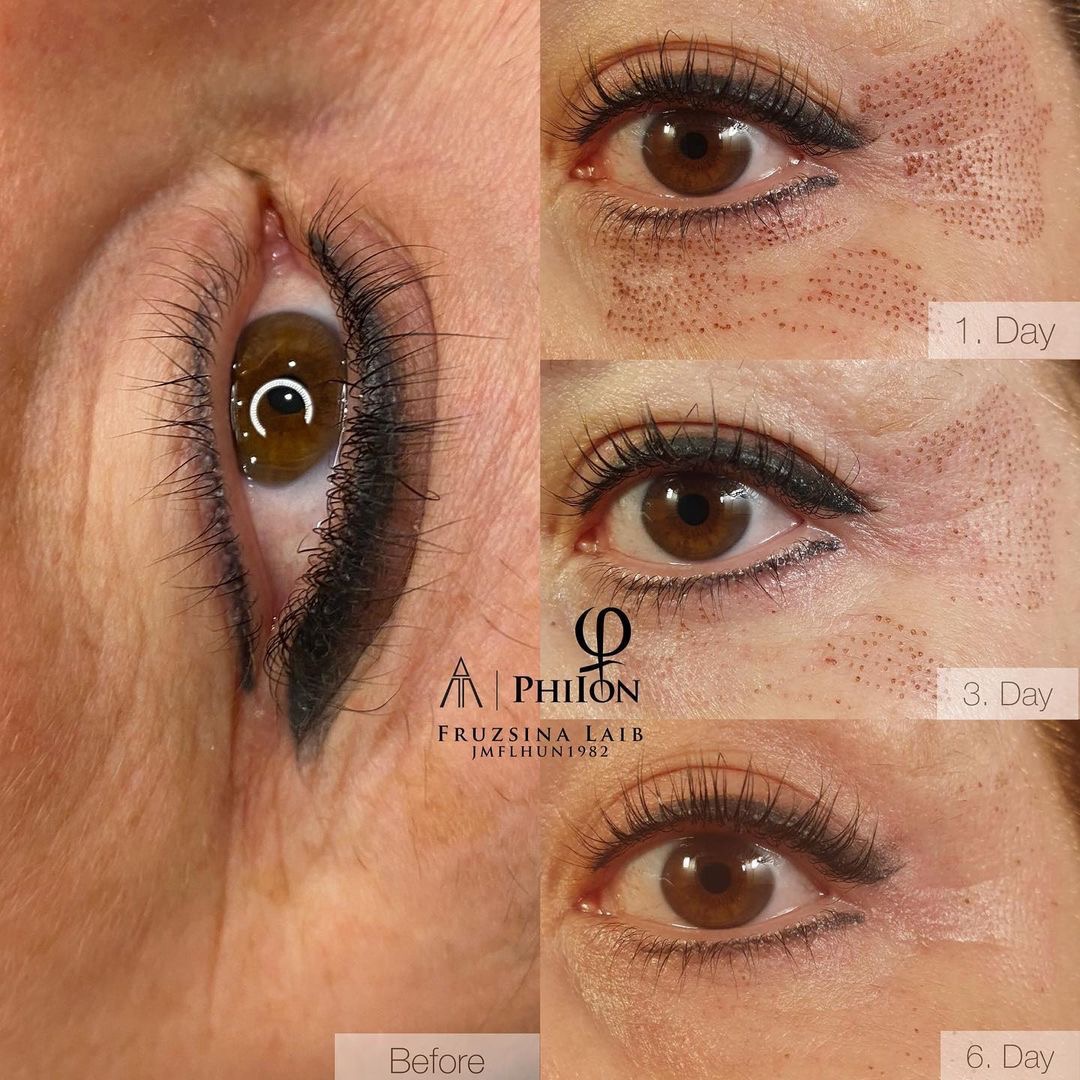
Days 5–7 — Natural Crust Shedding
Crusts begin to fall off naturally, revealing fresh, pink, highly sensitive skin.
This is the stage when proper aftercare has the strongest impact on the final result.
Recommendations for clients include:
- strict UV protection
- avoiding heat, sweating, makeup, and touching
- using regenerative products such as panthenol, hyaluronic acid, madecassoside, and non-comedogenic moisturizers
Although the skin looks more stable after Day 7, true dermal regeneration is only beginning.
Week 2 — Early Regeneration Phase
Visible redness begins to fade and the epidermal barrier becomes stronger.
Biological processes active at this stage:
- early collagen type I and III synthesis
- fibroblast proliferation
- neoangiogenesis (new capillary formation)
- improved cellular communication between epidermis and dermis
The skin appears fresher but remains biologically young and vulnerable.
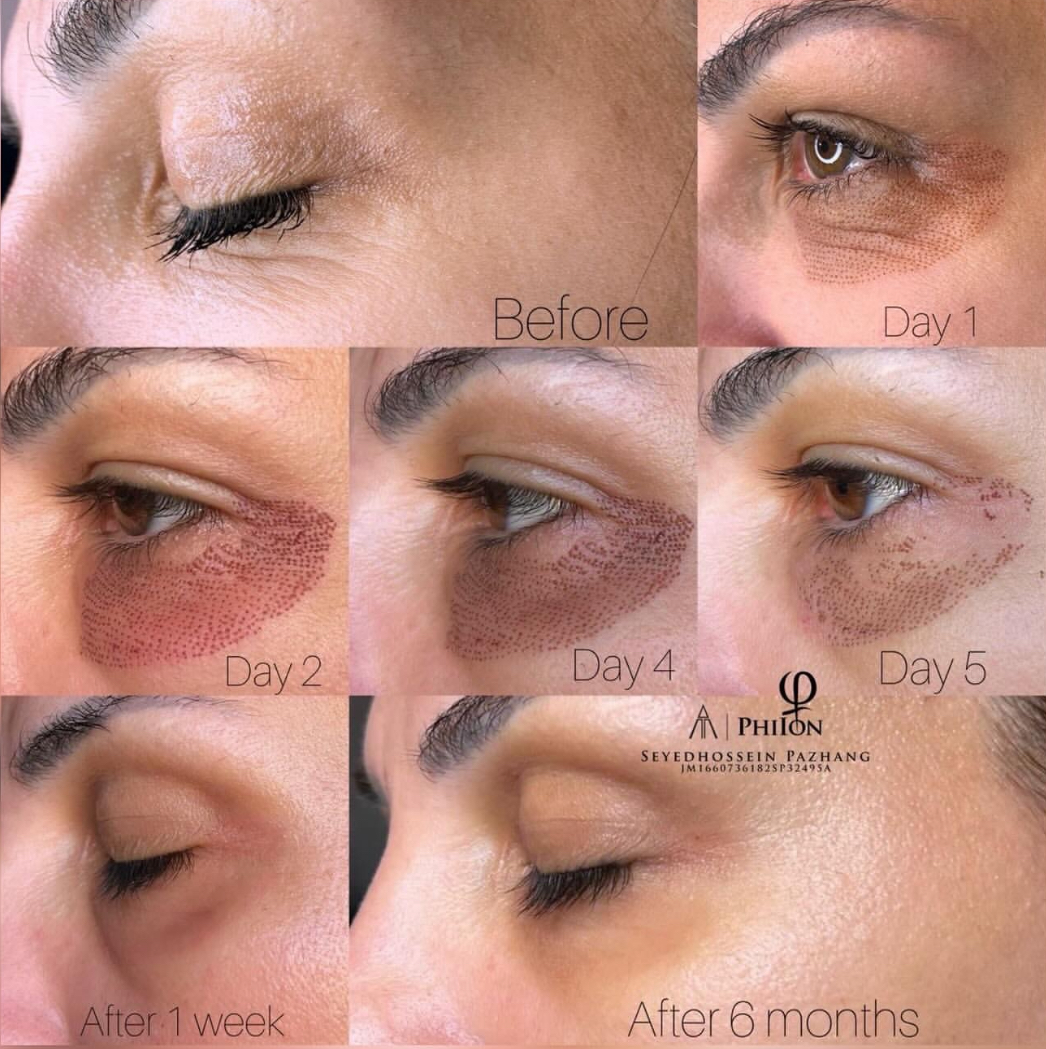
Weeks 3–4 — Collagen Remodeling Begins
This is when the first meaningful improvements appear:
- smoother skin texture
- reduction of fine lines
- improved elasticity
- more uniform tone
- visible tightening of the treated area
Fibroblasts are now actively producing new collagen and elastin, leading to dermal thickening and structural improvement.
Weeks 6–12 — Final Results and Collagen Maturation
This final stage determines the true quality of the treatment outcome.
During this period:
- collagen fibers mature and reorganize into strong, stable structures
- the dermis becomes denser and more elastic
- microcirculation improves
- the treated area achieves its final tightening and rejuvenation effect
This is why Plasma Fibroblast results look best weeks after treatment—the body needs time to build a new collagen matrix.
Clinical Knowledge Creates Clinical Confidence
Understanding each stage of the healing process allows you to:
- perform treatments more safely
- properly educate clients
- manage expectations realistically
- prevent complications
- achieve consistent and predictable results
If you want to master Plasma Fibroblast with medical precision, evidence-based protocols, and expert mentoring, you can join Plasma Fibroblast Professional Training Course — where all treatment stages, healing processes, and clinical techniques are taught in depth.
















